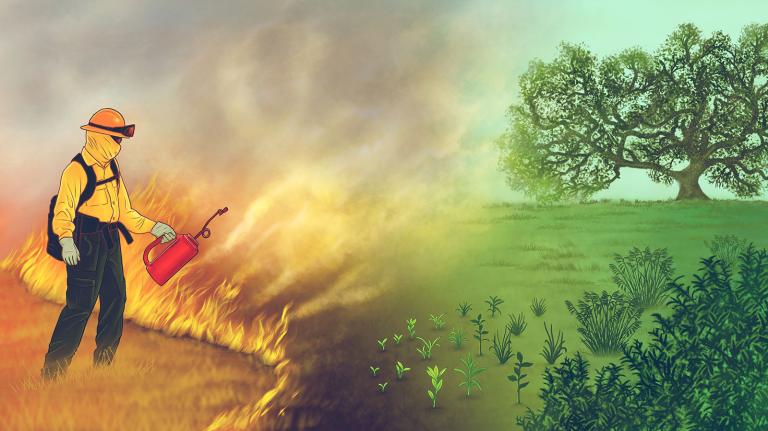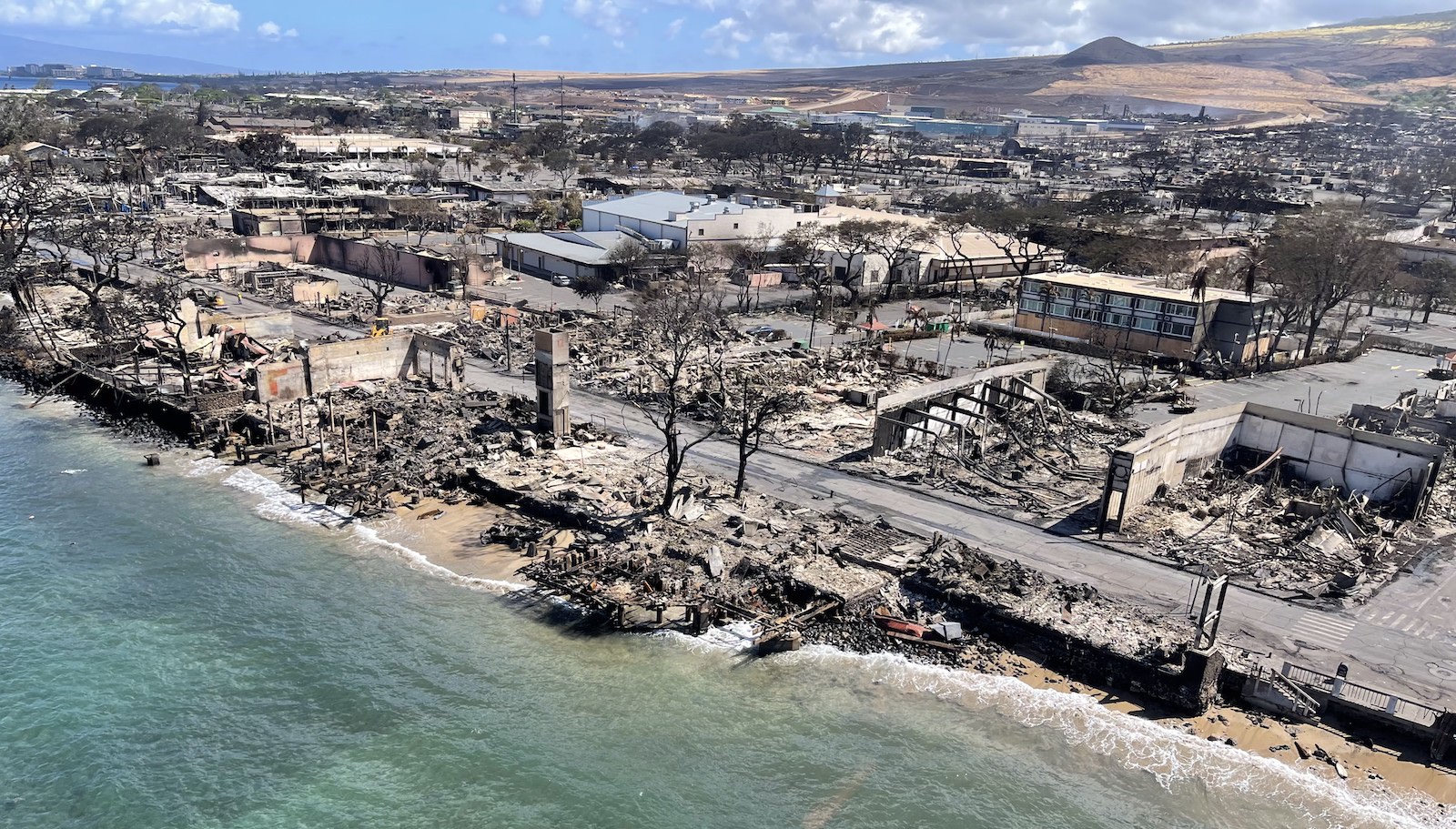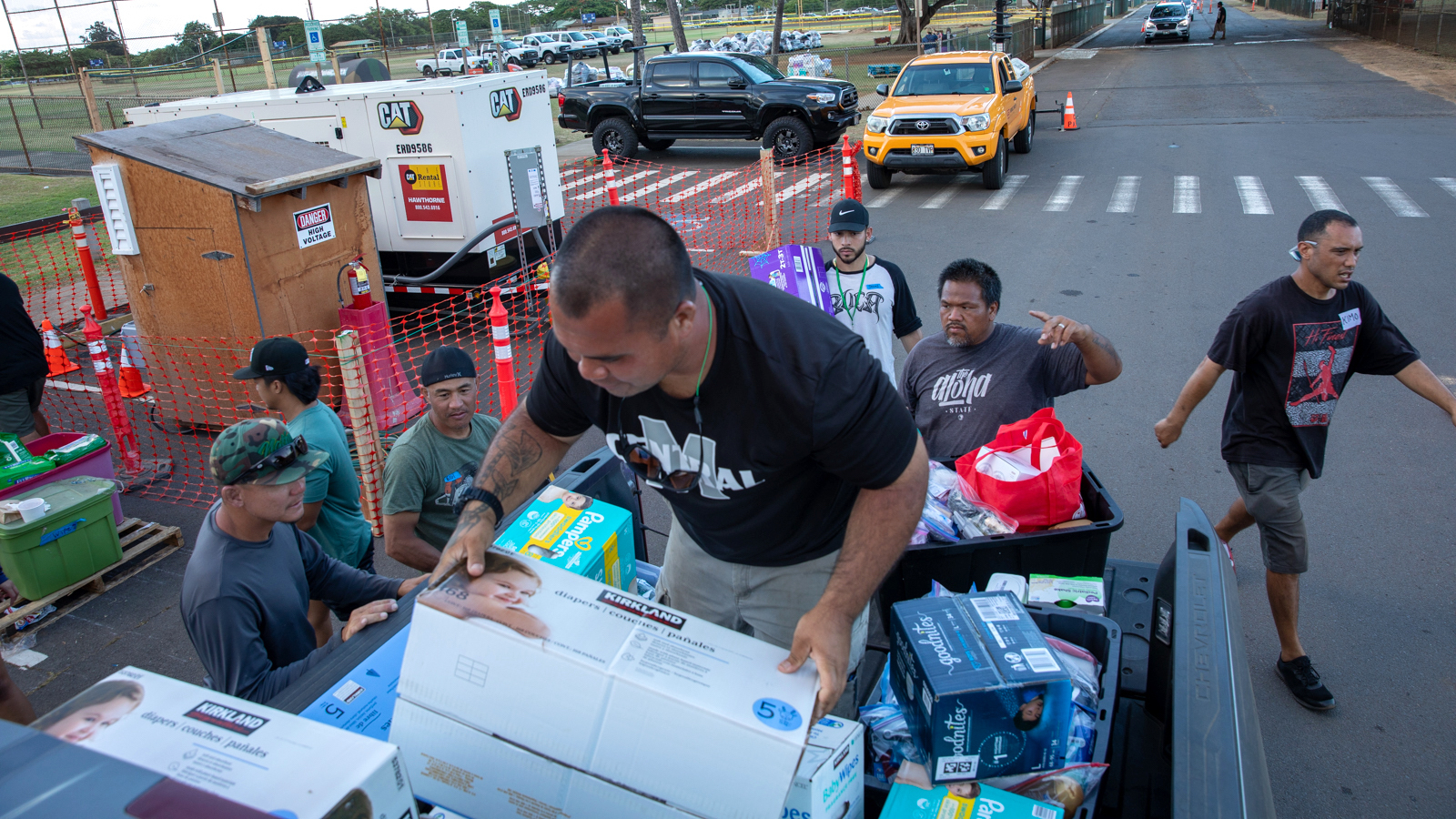David woke suddenly in the mid-afternoon. The 56-year-old chef could hear commotion outside and scrambled up from his nap, finding his roommates on the roof of their shared home, holding garden hoses and spraying water on a raging inferno licking closer by the minute.
“No, brah, we got to go,” he yelled. He couldn’t believe they hadn’t woken him up, or the dog who had been lounging in his room, that they were attempting to hose down the fast-growing flames instead of getting away from them as fast as possible. “We got to go!” He ran into the street. It was Tuesday, Aug. 8, and in the town of Lahaina in West Maui, people were screaming and running as the sky rained embers.
There was no warning from anyone about the fast-moving fire — no text, no officials knocking on his door, no sirens.
“It was just, boom!” he said later. “You saw a fire and you’re going to die. That’s how fast it happened. Run for your life.”
That’s what he did.
He jumped in a car with a panicked driver who drove the wrong direction, straight into the flames, where she got stuck in back-to-back traffic along the highway. David clutched the door handle to get out but it was so hot that it burned his fingers. The flames were 60 feet high and five feet away on either side of them. The cars in front of them were on fire. He yelled that they should run but he was the only one in the car who jumped out. Everyone else was frozen. He threw open the door and ran until the flames were far behind.
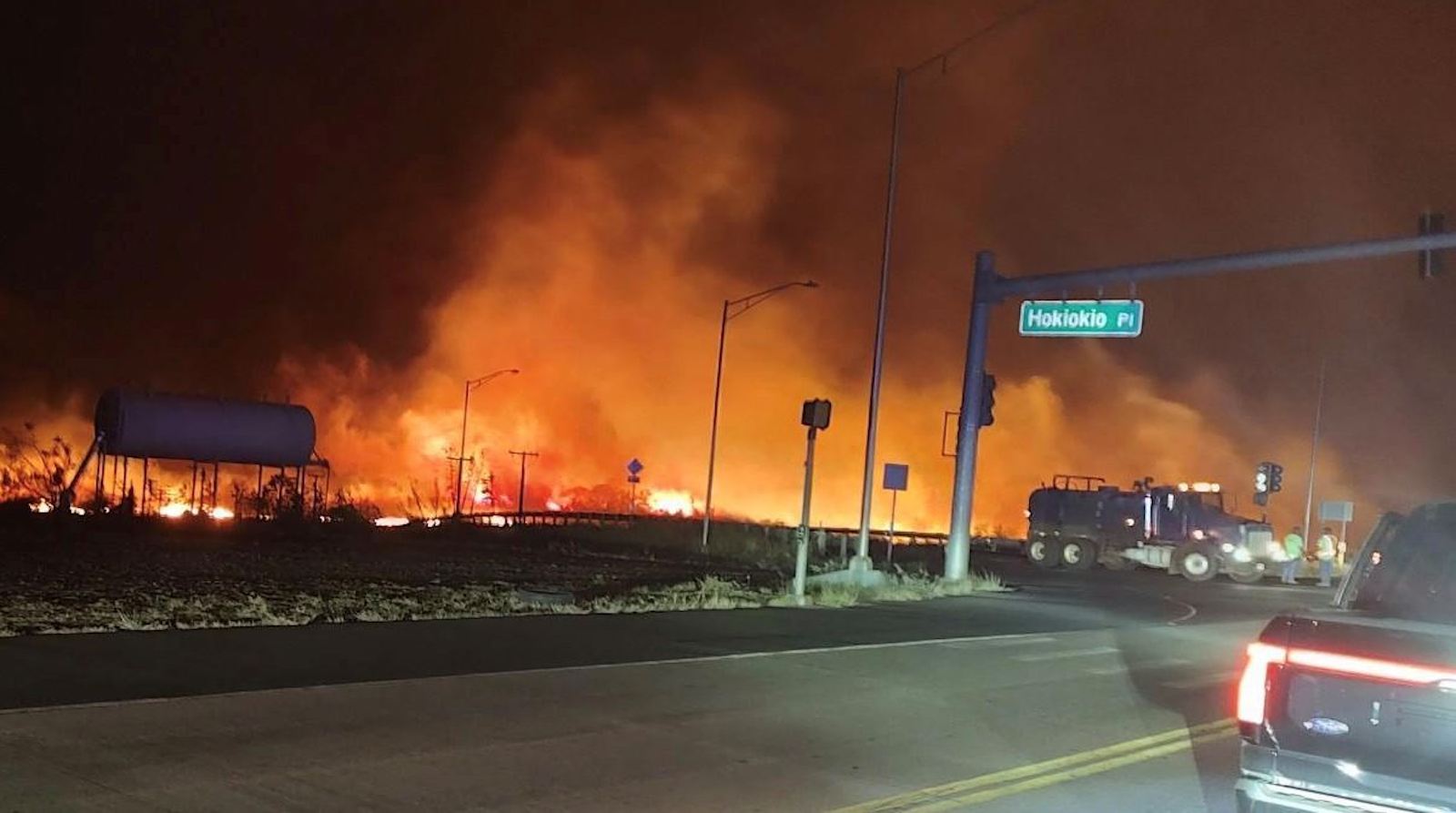
In the days since, he hasn’t been able to stay still. Every day he cries and keeps moving, sleeping along the road, by the park, at a friend’s and in a shelter. He can’t stop thinking about what he saw and questioning if he could’ve done more.
No one he was with that day survived — not his roommates, none of the other passengers in the car, not even the dog with whom he had been sleeping before waking up to a literal nightmare.
Just over a week later, the depth and breadth of the fire is still only just growing clear. Dozens of cadaver-sniffing dogs have been flown in from the continent to scour the fire zone. Less than half of the burned area has been searched, and with more than 100 dead, the fire is already the deadliest in modern U.S. history, yet 1,000 people are still missing. Family members are submitting their saliva to identify loved-ones’ remains, many of which are so badly burnt that they crumble when touched. It may not even be possible to identify or recover all bodies as some drowned at sea trying to escape while others succumbed to the flames.
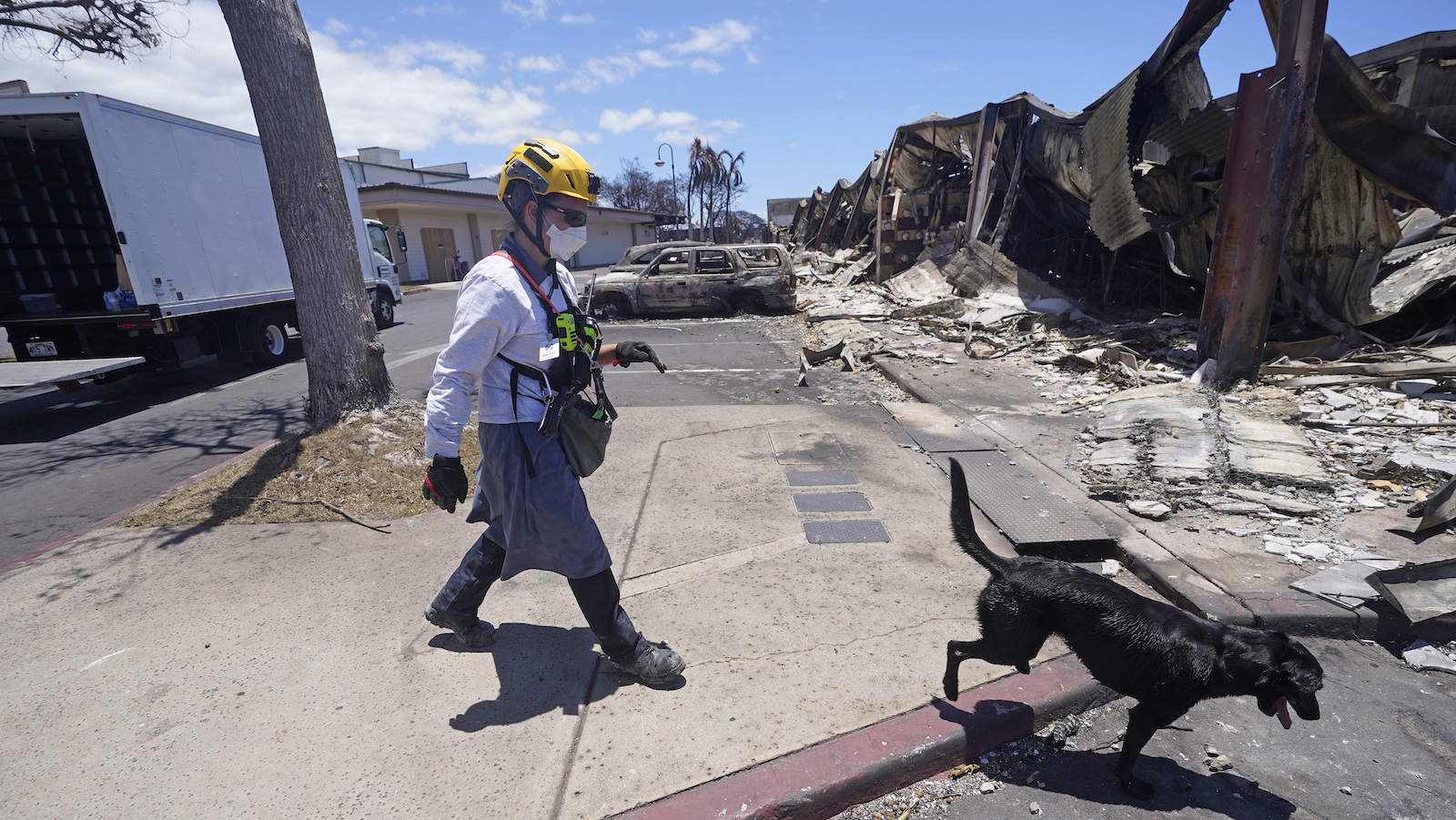
But while the inferno happened shockingly fast for the people of Lahaina, it didn’t come out of nowhere. It had been building for years, like the dry grasses that caught alight and fueled the blaze. The enormity of the catastrophe speaks to both the challenges of preparing for the unimaginable and the incredibly high stakes of inaction.
Susanne Moser, a New England-based climate change resilience expert, says communities and governments are going to have to confront that reality as climate change makes disasters like Maui’s more likely to occur. It may be expensive, but if people don’t pay for it upfront, they may pay later in lives.
“I think what’s happening now is that climate change is essentially coming back at us with its bill much more ferociously and rapidly and in a much more integrated, systematic sort of way than we have tried to understand it,” Moser said.
Lahaina, in Hawaiian, translates to “cruel sun.” The area was once home to 14 acres of wetland, including a large fishpond and a one-acre sandbar where high chiefs, and, later, Hawaiian royalty lived.
Katie Kamelamela, an assistant professor at Arizona State University who specializes in forest restoration and Indigenous practices, says the tragedy in Lahaina can trace its origins to the privatization of land in 1848, known as the Great Mahele, that eventually led to huge swaths of land sold to large agricultural companies.
Sugar became the dominant industry in Lahaina in the latter part of the 19th century, and to irrigate their fields, plantation owners diverted streams that once flowed from the mountains to the sea. Lahaina’s royal fishpond devolved into a stagnant marsh, and plantation owners filled it in with coral rubble.
When Lahaina burned last week, the former fishpond had long been buried under a baseball field and parking lot.

The dominance of the sugar industry was cemented with the 1893 overthrow of the Hawaiian Kingdom. American and European businessmen backed the removal of Queen Liliʻuokalani and succeeded with the support of United States Marines and Navy sailors. The last of Mauiʻs sugar plantations closed in 2016, as tourism and real estate superseded agriculture as the state’s most lucrative land uses.
Water is still a finite resource. Firefighters battling the Lahaina flames found themselves pulling from dry hydrants until they were eventually overwhelmed. A state official has come under scrutiny for delaying the release of water in West Maui, though it’s not clear whether his decision actually affected the hydrants.
What is clear is that instead of a wetland cultivated by Indigenous caretakers or a sugar plantation irrigated for crops, the Lahaina that the fire met last week was dry and primed to burn. A third of Maui was in drought and a hurricane passing south of the islands whipped up 80 mph winds. Non-native grasslands had proliferated after the closing of the sugar and pineapple fields, but many thinly walled wooden plantation homes still stood.
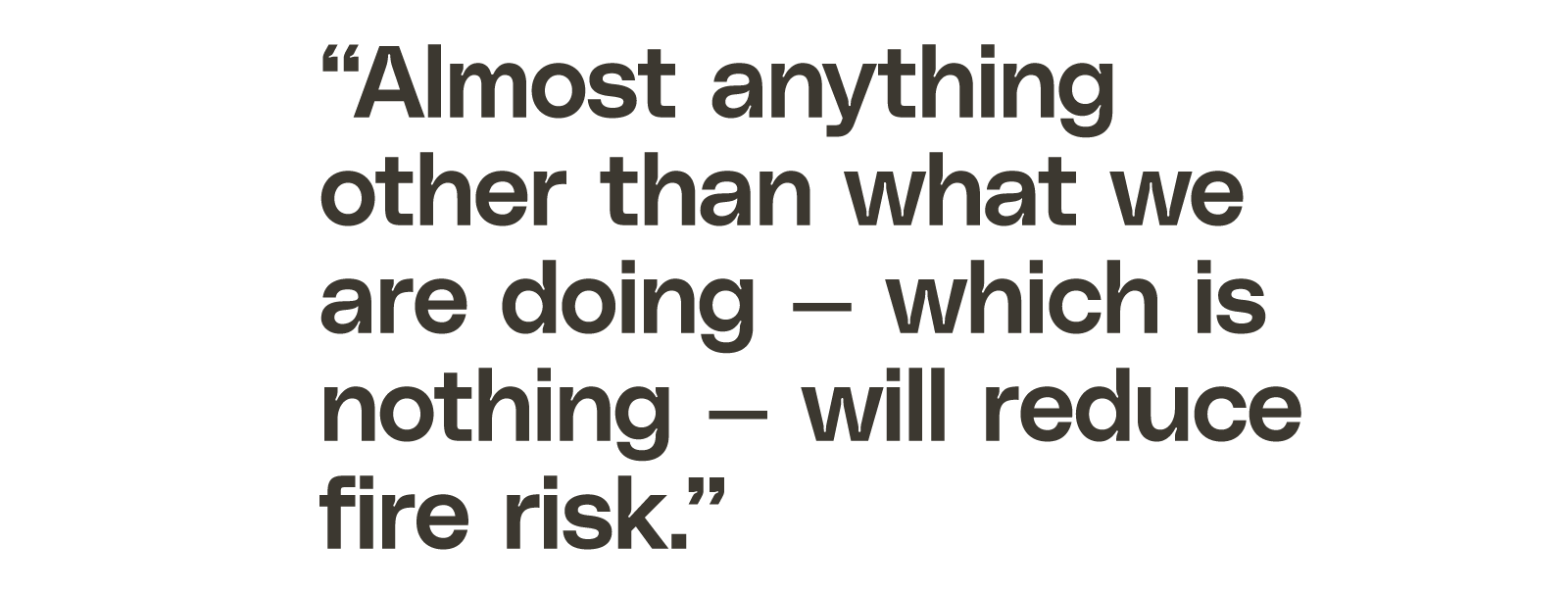
Local wildfire experts like Clay Trauernicht for years had been sounding the alarm on the risks. When brush fires scorched 10,000 acres in Maui in 2019, Trauernicht wrote articles, testified in public hearings, and held meetings letting people know that fires were getting worse and Hawaiʻi needed to be prepared.
It was difficult to get people to care about fires when the main casualties were native forests and structures, Trauernicht told Grist this week.
It didn’t help that the neighborhoods most likely to burn statewide were communities like Oahu’s Waianae, drier west side communities with lower property values and more Native Hawaiian residents, rather than the lush, green wealthier enclaves on the windward coasts.
What’s frustrating to Trauernicht is how easy it would have been to prevent non-native grasslands from running rampant. “Almost anything other than what we are doing — which is nothing — will reduce fire risk,” he said.
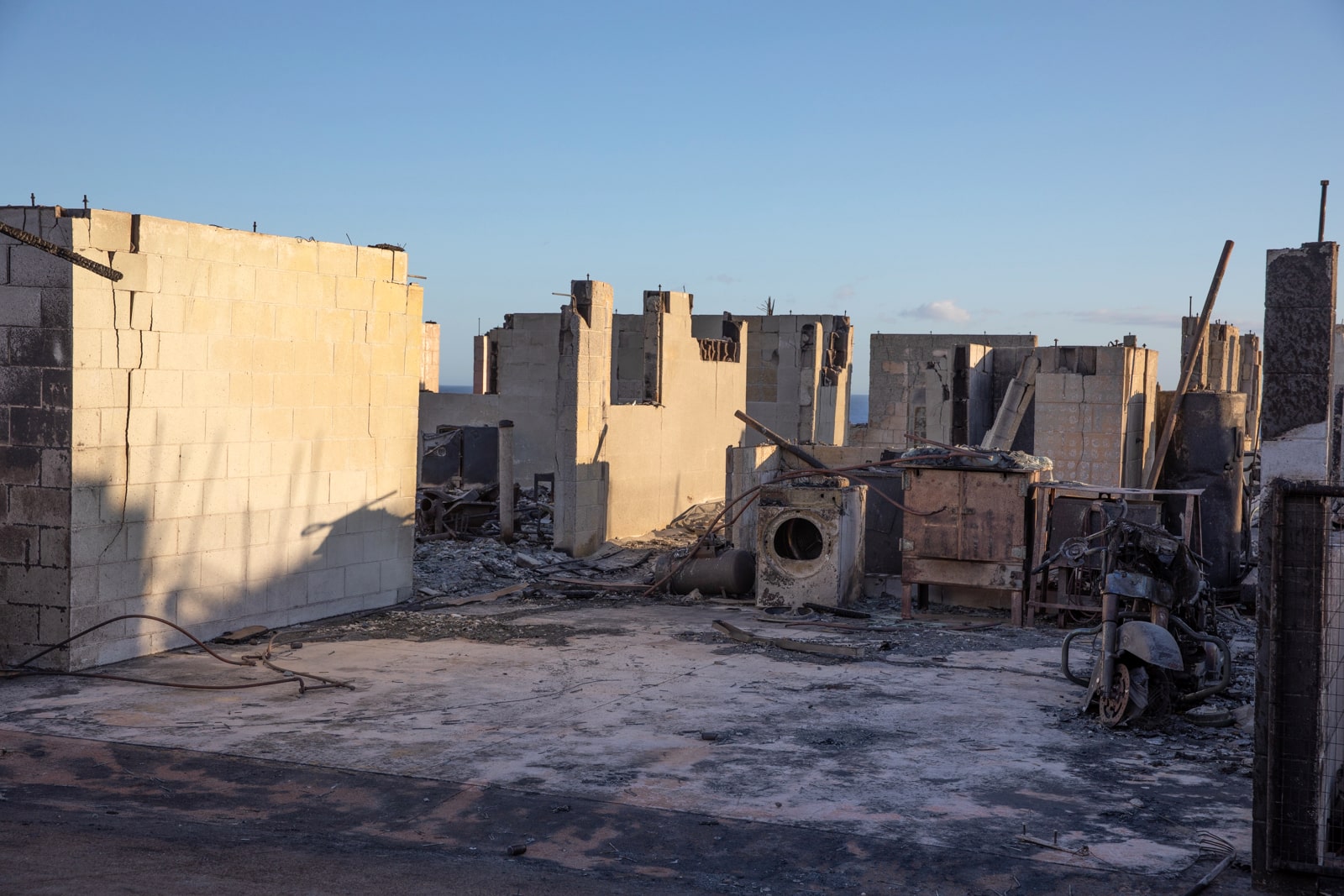
But much easier than pinpointing problematic land use decisions is condemning whoever lit the spark. And so far, many are blaming the Hawaiian Electric Company. No official cause has yet been determined, but at least four lawsuits have already been filed against the utility, sending its stock value plunging by $1 billion and casting doubt on the future of the company established in 1891 – two years before the overthrow of the Hawaiian Kingdom.
Attorneys point out that the utility recognized in a public filing last year that its risk of sparking a wildfire was “significant” and argue that the company was too slow to implement reforms. “The need to adapt to climate change is undeniable and urgent,” the company acknowledged in a public filing.
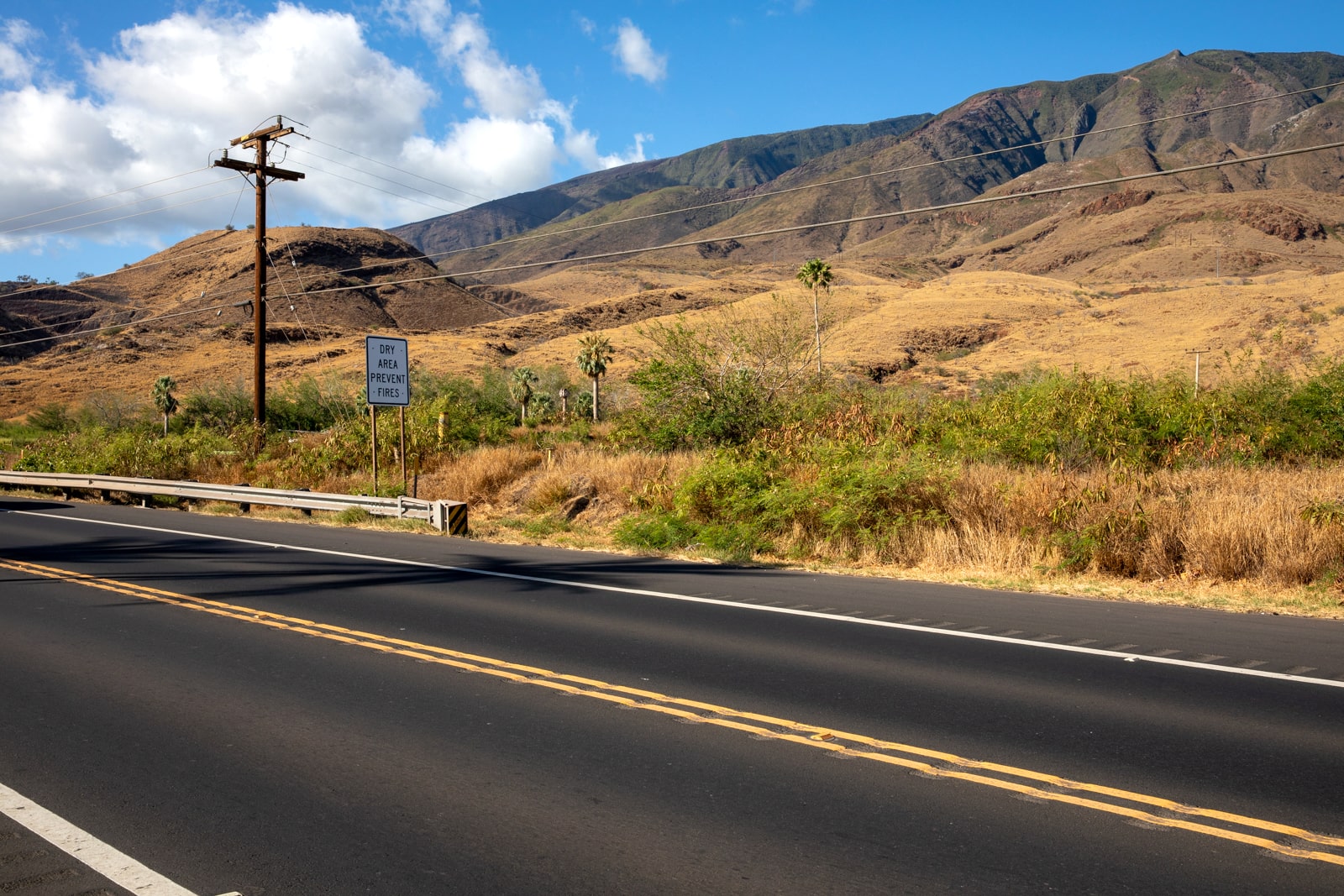
Planning document after planning document suggests Hawaiʻi officials both knew this tragedy could happen, and yet couldn’t imagine it actually happening. A 2020 hazard mitigation plan identified Lahaina as a high risk area for wildfires. Maui’s draft climate change action plan notes that wildfire burn areas quadrupled in the last century. But in a state report on emergency planning, officials said wildfires were considered a “low risk” to human life.
The more pressing concerns were hurricanes or tsunamis, so much so that although the state had invested in a state-of-the-art siren system — “the largest single integrated public safety outdoor siren warning system in the world” — local emergency officials didn’t turn it on even after learning that firefighters were being overwhelmed by the blaze.
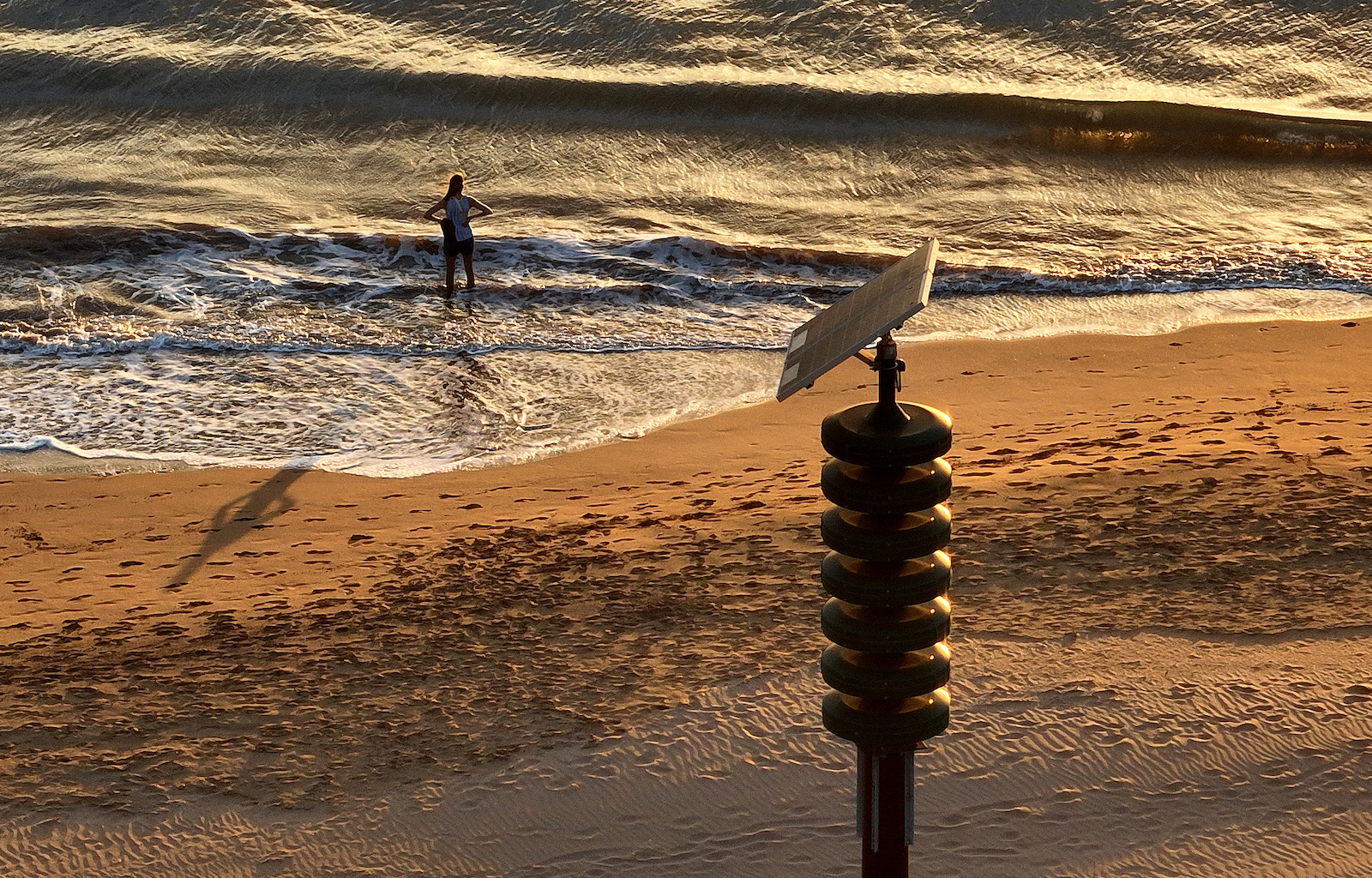
On Wednesday, Herman Andaya, then Maui’s top emergency management official, defended that call, saying the system would not have saved lives because people would not have heard the sirens if they were indoors, and that the sirens may have prompted people to flee inland, toward the fire, as the blaring sound is intended to push people to find higher ground. Andaya resigned Thursday.
Instead, county officials sent out emergency phone and social media alerts – alerts that many, like David, never received.
The next day, Hawaii Lt. Gov. Sylvia Luke told news media that officials hadn’t anticipated that a hurricane that never made landfall on the islands could have wrought such destruction. But five years before Lahaina’s historic Front Street was incinerated — almost to the date — the periphery of another hurricane was stirring up strong winds on Maui, fueling another conflagration that was stopped just yards away from homes.
“There was a very, very strong possibility that the entire Lahaina town could have gone up in flames yesterday,” then-Mayor Alan Arakawa told a local news crew as rain poured down behind him on Aug. 26, 2018. The mayor said he’d been on the phone with federal emergency officials trying to figure out how to evacuate 20,000 people in the Lahaina area if needed.
There was no guarantee such an evacuation was even possible. “If the hurricane had generated the kinds of winds and surf that we had been anticipating — 15 to 20 plus feet — it would’ve buried Honoapiʻilani Highway and we would not have had access in and out of Lahaina,” he said.
Burned-out cars now line that same highway where people abandoned them in desperation or were caught by the roaring flames.

One cruel irony is Hawaiʻi has been a national leader in climate change preparedness. While states like Montana have banned agencies from considering climate change in their decisions, Hawaiʻi was the first state to set a 100% renewable energy goal, the first to declare a climate emergency, funding climate commissions and offices and pledging to go net-carbon neutral by 2045.
But what local officials may have overlooked was the incredible risk of what scientists call compound hazards, the intersection of multiple disasters — such as how hurricane-fueled winds can combine with a brush fire to erase an entire town.
Even Trauernicht, the state’s Cassandra, describes what happened last week as “unimaginable.” Moser from New England says she hears that word over and over again when she works with emergency preparedness officials in the wake of a disaster.
“The strong takeaway for me is that if you want to get prepared, you have to open the taboo, the unimaginable, to think about it,” said Moser. “Everybody should be thinking about multiple system failures at the same time and multiple hazards coinciding because that’s the kind of world that we live in.”

What has been heartening to her is seeing how on Maui, Native Hawaiians and other locals have come together to help one another emerge from the wreckage. She’s much more concerned about places where there’s not as much social cohesion, where people may go hungry longer without concerned neighbors knocking on their doors.
But nothing can erase from David’s memory the scenes he keeps replaying over and over. After he ran from the car, he joined a caravan of survivors that walked south for miles until they hit the next town of Olowalu. A friend of his eventually picked him up, and they went to Costco where they drank alcohol, covered in soot, trying to comprehend what had just happened.
He also replays the scenes of the Lahaina he knew. The waves and the harbor and the boats and the ocean. The chickens and birds he passed when riding his bike down Front Street to make loco moco and pancakes for patrons at the cafe where he worked.
“It was just the most beautiful place you’ve ever been,” he said. “All of a sudden it looks like literally a nuclear bomb went off.”
He would give anything to go back.
Grist climate solutions writer Gabriela Aoun Angueira contributed reporting to this story.
A previous version of this story referred to Honoapiʻilani Highway’s two lanes. There are two lanes in each direction, not two lanes total.
